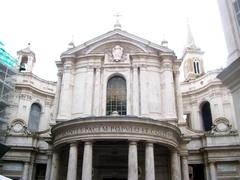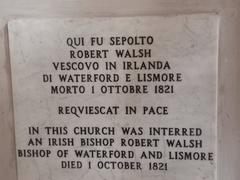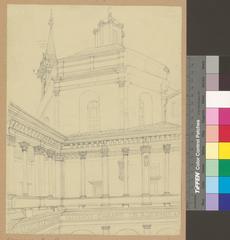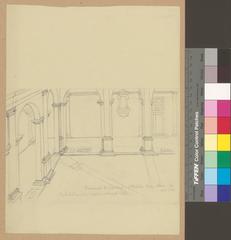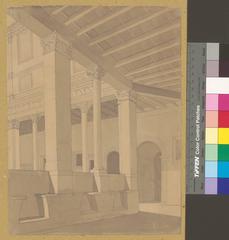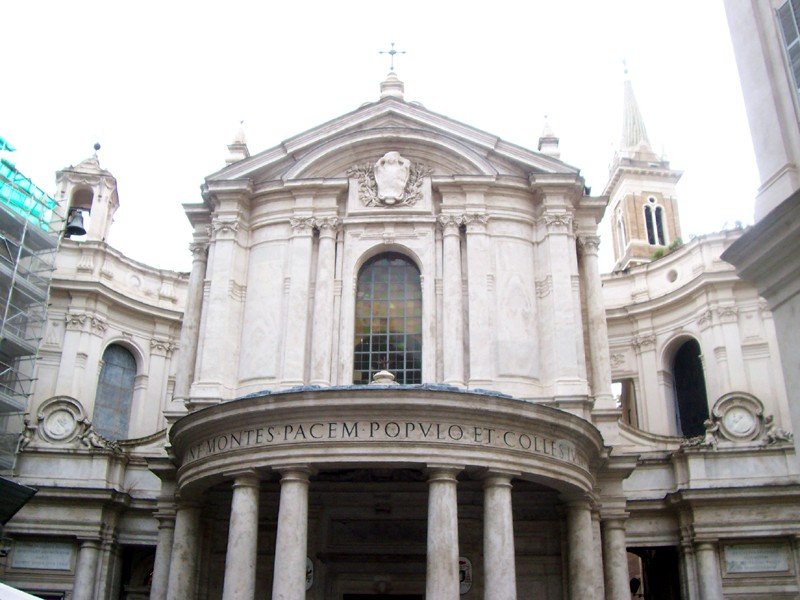
Santa Maria della Pace Rome: Visiting Hours, Tickets, and Historical Significance Guide
Date: 14/06/2025
Introduction
Nestled in Rome’s historic center near Piazza Navona, Santa Maria della Pace is a remarkable testament to the city’s artistic, architectural, and spiritual legacy. With origins dating to the late 12th century, the church is an emblem of Rome’s transformation from the medieval period through the Renaissance and Baroque eras. Here, visitors can explore masterpieces by some of Italy’s most celebrated artists—most notably Raphael—and marvel at architectural innovations by Donato Bramante and Pietro da Cortona. Whether you are an art lover, history enthusiast, or simply seeking a tranquil retreat from Rome’s bustle, Santa Maria della Pace offers a layered journey through the city’s cultural evolution (his.com PDF; turismoroma.it; baroqueart.museumwnf.org).
This guide provides comprehensive information on the church’s history, visiting hours, ticketing, accessibility, and practical tips to ensure an enriching visit.
Table of Contents
- Introduction
- Historical Overview
- Artistic Highlights
- Visitor Information
- Special Events and Tours
- FAQs
- Summary and Travel Tips
- References
Historical Overview
Medieval Origins and Papal Patronage
The earliest church on this site dates to 1186, associated with the “aquarellari,” or water sellers, who served neighborhoods without direct access to the Tiber (his.com PDF). Dedicated to the Virgin Mary, the church’s foundation is rooted in a legendary miracle: after a soldier struck a Marian image, it was said to have bled, prompting Pope Sixtus IV in 1482 to order the construction of a new sanctuary named “Santa Maria della Pace”—Our Lady of Peace—symbolizing both religious and civic reconciliation.
Renaissance Transformations
The church’s Renaissance phase began under Sixtus IV, with architect Baccio Pontelli designing a building featuring a simple nave and semicircular apse. The early 16th century saw the addition of the cloister and monastery, attributed to Donato Bramante. Completed in 1504, the harmonious two-story arcades of Bramante’s cloister became a model for Renaissance architecture (Britannica). During this time, prominent Roman families funded the decoration of side chapels, and new artistic commissions enhanced the church’s interior.
Baroque Renovation and Urban Impact
The most dramatic transformation occurred in the mid-17th century under Pope Alexander VII Chigi, who commissioned Pietro da Cortona to redesign the church’s façade and surrounding piazza. This bold Baroque intervention created a theatrical backdrop for the newly opened square, reflecting Alexander VII’s ambition to reshape Rome’s urban landscape. The semicircular portico and dynamic façade, completed in 1657, are hallmarks of the Roman Baroque (baroqueart.museumwnf.org).
Artistic Highlights
Raphael’s Sibyls and the Chigi Chapel
A major draw for visitors is the Chigi Chapel, where Raphael’s 1514 fresco “The Sibyls” adorns the arch. Commissioned by Agostino Chigi, this masterpiece depicts four sibyls—Cumaean, Persian, Phrygian, and Tiburtine—receiving divine inspiration, paired with Old Testament prophets. Raphael’s dynamic compositions and psychological nuance mark a high point of Renaissance art (his.com PDF; visitrome.substack.com).
Other Noteworthy Chapels and Artists
- Ponzetti Chapel: Features frescoes by Baldassarre Peruzzi, integrating painting and architectural illusionism (en.wikipedia.org).
- Cesi Chapel: Designed by Antonio da Sangallo the Younger, with Mannerist frescoes by Rosso Fiorentino and sculptures by Vincenzo de’ Rossi.
- Olgiati Chapel: Houses works by Antoniazzo Romano, blending medieval iconography with Renaissance naturalism.
- Mignanelli Chapel: Adorned by Baroque painter Carlo Maratta.
- High Altar and Tribune: Display works by Maratta, Peruzzi, Orazio Gentileschi, and Francesco Albani, providing a survey of evolving artistic styles (thecatholictravelguide.com).
The church’s interior is further enriched with stucco, gilding, and marble inlays, blending Renaissance balance with Baroque exuberance (turismoroma.it).
Bramante’s Cloister
The Chiostro del Bramante is a Renaissance architectural gem, celebrated for its elegant arcades and tranquil courtyard. Today, it operates as a vibrant exhibition center, hosting international art events and providing a peaceful escape in the city’s heart (art-facts.com; turismoroma.it).
Visitor Information
Visiting Hours and Tickets
- Church: Generally open Monday–Saturday, 9:00 AM–6:00 PM; Sunday and holidays, 9:00 AM–1:00 PM. Hours may vary for religious ceremonies or events—check official sources before your visit (turismoroma.it).
- Entry: Free for the church. The Bramante Cloister requires a ticket (typically €10–€15, including exhibitions).
- Contact: +39 06 6861156
Accessibility
The church and cloister are wheelchair accessible, with ramps at the entrance. Some areas of the cloister may have limited access due to the historic structure; contact ahead for specific needs (Rome accessible section).
How to Get There
- By Foot: Two minutes from Piazza Navona.
- By Metro: Closest station is Spagna (Line A), about 10–15 minutes on foot.
- By Bus: Lines 116, 117, 590 to Piazza Navona.
- By Car: Limited nearby parking; public transport is recommended.
Practical Visitor Tips
- Best Times: Early mornings on weekdays are quietest.
- Dress Code: Modest attire required (shoulders and knees covered).
- Photography: Allowed without flash; respect signage regarding restrictions.
- Nearby Sites: Combine your visit with Piazza Navona, the Pantheon, and Campo de’ Fiori.
- Guided Tours: Available through local agencies and often include the cloister.
Special Events and Tours
The Bramante Cloister regularly hosts art exhibitions, concerts, and cultural events. Guided tours of the church and cloister—focusing on art, history, and architecture—are available and recommended for deeper insight. Check the official tourism portal or the Chiostro del Bramante’s website for updated schedules.
Frequently Asked Questions (FAQ)
Q: What are the visiting hours?
A: Monday–Saturday, 9:00 AM–6:00 PM; Sundays and holidays, 9:00 AM–1:00 PM. Confirm before visiting.
Q: Is there an entrance fee?
A: Entry to the church is free; tickets are required for the Bramante Cloister and exhibitions.
Q: Is Santa Maria della Pace wheelchair accessible?
A: Yes, with minor limitations in some cloister areas.
Q: Can I take photos?
A: Yes, without flash.
Q: Are guided tours available?
A: Yes, through local operators and the official tourism portal.
Summary and Travel Tips
Santa Maria della Pace encapsulates Rome’s evolution from medieval roots to Renaissance refinement and Baroque splendor. Its artistic treasures—especially Raphael’s Sibyls—make it a destination for art lovers and history buffs. Free entry, convenient location, and accessible design ensure a rewarding visit. The adjacent Bramante Cloister’s exhibitions add a contemporary cultural dimension.
Top Tips:
- Arrive early for a peaceful experience.
- Pair your visit with nearby landmarks for a full day of exploration.
- Use the Audiala app for curated tours and up-to-date info.
References
- Santa Maria della Pace, 2025, his.com PDF
- Britannica
- Baroque Art Museum
- Rome Tourism Official Site
- Art Facts
- Lonely Planet
- Visit Rome Substack
- The Catholic Travel Guide
- Wikipedia
For enhanced planning, optimize your experience by consulting interactive maps, virtual tours, and the official websites. Images and digital resources further enrich your understanding.
